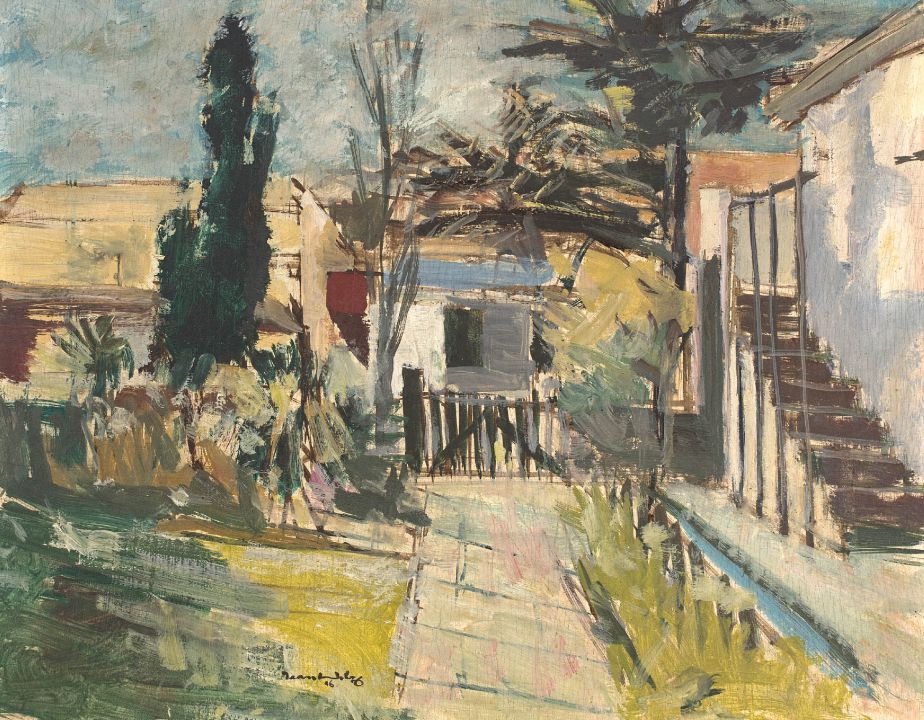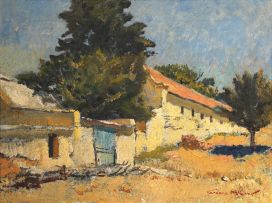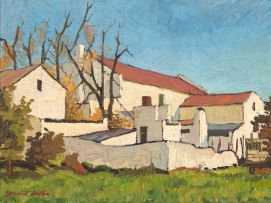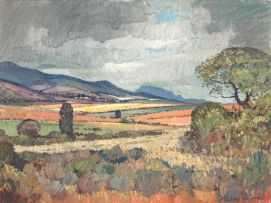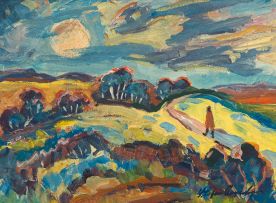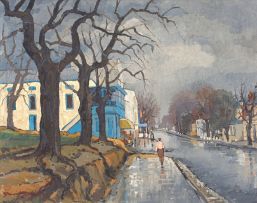Important South African and International Art, Decorative Arts & Jewellery
Live Auction, 5 March 2018
Art: Evening Sale
Incl. Buyer's Premium & VAT
About this Item
signed and dated 46
Notes
The view in this painting by Jean Welz faces Russell Street in Worcester, looking away from what is today The Hugo Naudé Art Museum. Up the stairs to the right is The Little Theatre which, at the time this painting was executed, was home to the Hugo Naudé Art Centre of which Welz was "the all-in-one principal, architect and building supervisor".1
Welz, born in Salzburg, Austria, had studied art in Paris and architecture in Vienna and, upon his arrival in South Africa, had worked at Wits University in the Department of Architecture. In 1938, when poor health forced him to settle in the dry climate of the Karoo on a farm outside Barrydale, Welz began focussing seriously on his painting. At the beginning of 1943 the Welz family moved to Worcester into the former home of Hugo Naudé.
During his time Naudé had used the outbuildings both as a studio and to hold meetings of the local Boy Scouts of which he was Scout Master. Naudé's sister Adèle recalls "I remember easels, canvasses, the smell of turpentine and paint, walls vibrating with colour, a fireplace, tea or coffee and hot scones, and beauty in every object, however humble its use or origin".2
With help from the Carnegie Foundation, Welz converted the building and established the Little Theatre which formed part of the Hugo Naudé Art Centre where he gave lectures and provided tutelage to school pupils of varying ages. In the accompanying photograph taken at approximately this time, a three-year-old Stephan can be seen at his father's knee whilst Welz Snr. engages his pupils in art lessons. Amongst the still lifes and interior studies displayed on the wall can be seen an exterior study of a figure ascending the stairs to the studio as depicted in the present lot.
Reflecting on this period of his production Esmé Berman notes: "The first half of the decade of the Forties had been devoted to acquiring a vocabulary adequate to his perfectionistic needs; during the second half he began to give rein to his poetic inclinations, to improvise upon his formal compositional devices and to intensify the meditative properties which had informed his earlier work". 3
1. Elza Miles. (1997). The World of Jean Welz. Cape Town, Fernwood Press. Page 44.
2. Adele Naudé (1974). Hugo Naudé. Cape Town: Struik. Page 10.
3. Esmé Berman (1996). Art & Artists of South Africa (3rd ed). Cape Town: Southern Book Publishers. Page 492.
Provenance
Acquired from the artist by the current owner's parents, and thence by descent.
